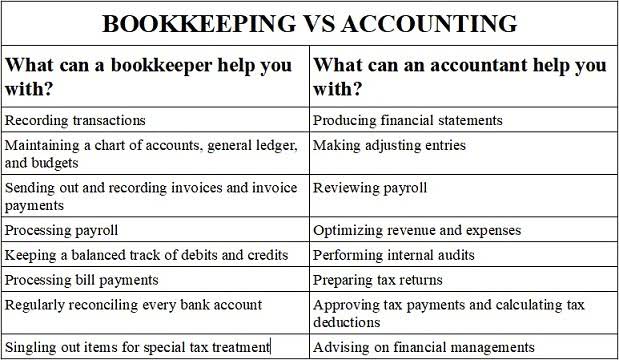
Cheniere Energy, Inc. is the leading producer and exporter of LNG in the United States, reliably providing a clean, secure, and affordable solution to the growing global need for natural gas. Cheniere is a full-service LNG provider, with capabilities that include gas procurement and transportation, liquefaction, vessel chartering, and LNG delivery. Cheniere has one of the largest liquefaction platforms in the world, consisting of the Sabine Pass and Corpus Christi liquefaction facilities on the U.S. Gulf Coast, with total production capacity of approximately 45 mtpa of LNG in operation and an additional 10+ mtpa of expected production capacity under construction.

Stockholders’ Equity: What It Is, How to Calculate It, Examples
In an accounting cycle, after a trial balance and adjusting and closing entries are completed, and the income statement is generated, we are ready to prepare the Statement of Retained Earnings. This means that Elena currently has $97,000 in retained earnings, a fair amount to reinvest in her business, and a good sign of future growth to her potential investors. Over the same duration, its stock price rose by $84 ($112 – $28) per share.
- Many believe corporations are attempting to smooth earnings, hide possible problems, or cover up mistakes.
- To see how retained earnings impact shareholders’ equity, let’s look at an example.
- Beginning retained earnings are then included on the balance sheet for the following year.
- It is possible to determine a company’s shareholders’ equity by deducting its total liabilities from its total assets, both of which are listed on the balance sheet.
Stockholders Equity
Some major, profitable companies have recently had negative shareholders’ equity for a period of time, including the major restaurant chains McDonald’s, Starbucks, and Papa John’s. The primary driver in these cases may have been issuing massive debt and refranchising or selling corporate-owned stores to franchisees. Many new companies start with negative equity because they’ve had to borrow money before they can start earning profits. This money can be used to pay down the debt and reduce the company’s negative equity. For investors, a negative stockholders’ equity is a traditional warning sign of financial instability. It can also make it difficult for investors to assess the company’s financial health using traditional metrics since a negative stockholders’ equity can skew important financial ratios like the debt-to-equity ratio.
What is the formula for the retained earnings ratio?
These errors can stem from mathematical errors, misinterpretation of GAAP, or a misunderstanding of facts at the time the financial statements were prepared. Many errors impact the retained earnings account whose balance is carried forward from the previous period. Since the financial statements have already been issued, they must be corrected. The correction involves changing the financial statement amounts to the amounts they would have been had no errors occurred, a process known as restatement. The correction may impact both balance sheet and income statement accounts, requiring the company to record a transaction that corrects both. Since income statement accounts are closed at the end of every period, the journal entry will contain an entry to the Retained Earnings account.
- A SME is any entity that publishes general purpose financial statements for public use but does not have public accountability.
- In certain circumstances, if a company already has low or negative retained earnings, the additional amortization expenses can further reduce shareholders’ equity and even push it into negative territory.
- Confused because banks tell you that they are “crediting” your account by putting money in it?
- However, it is up to each State Board of Accountancy todetermine if that state will allow the use of IFRS or IFRS for SMEsby non-public entities incorporated in that state.
- Because there are two or more accounts affected by every transaction carried out by a company, the accounting system is referred to as double-entry accounting.
- A company that routinely gives dividends to shareholders will tend to have lower retained earnings, and vice versa.
- If the retained earnings balance is gradually accumulating in size, this demonstrates a track record of profitability (and a more optimistic outlook).
However, it is more difficult to interpret a company with high retained earnings. Management and shareholders may want the company to retain earnings for several different reasons. Being better informed about the market and the company’s business, the management may have a high-growth project in view, which they may perceive as a candidate for generating substantial returns in the future. Sometimes when a company wants to reward its shareholders with a dividend without giving away any cash, it issues what’s called a stock dividend. This is just a dividend payment made in shares of a company, rather than cash. Using the return on equity ratio, equity investors can determine the return the company made on their equity investment (ROE).
Is Stockholders’ Equity Equal to Cash on Hand?
It stands for an accounting value that is distinct from the market value or actual value of a corporation. From the real balance sheet for XYZ Ltd., this was obtained from their annual report. XYZ Ltd.’s total assets were $12 billion and its total liabilities were $5 billion as of March 31, 2021. Examples of these items include sales revenue, cost of goods sold, depreciation, and other operating expenses. Non-cash items such as write-downs or impairments and stock-based compensation also affect the account. Any changes or movements with net income will directly impact the RE balance.
Treasury shares continue to count as issued shares, but they are not considered to be outstanding and are thus not included in dividends or the calculation of earnings per share (EPS). Treasury shares can always be reissued back to stockholders for purchase when companies need to raise more assets minus liabilities and retained earnings capital. If a company doesn’t wish to hang on to the shares for future financing, it can choose to retire the shares. The equity capital/stockholders’ equity can also be viewed as a company’s net assets. You can calculate this by subtracting the total assets from the total liabilities.
Owner’s equity belongs entirely to the business owner in a simple business like a sole proprietorship because this form of business has just a single owner. It can be defined as the total number of dollars that a company would have left if it liquidated all of its assets and paid off all of its liabilities. From there, the company’s net income—the “bottom line” of the income statement—is added to the prior period balance. The “Retained Earnings” line item is recognized within the shareholders equity section of the balance sheet. It’s also important to consider how a company calculates its retained earnings. Businesses can calculate their retained earnings using either historical cost or current cost accounting methods.
For example, a partnership of two people might split the ownership 50/50 or in other percentages as stated in the partnership agreement. Debt is a liability, whether it is a long-term loan or a bill that is due to be paid. Hence, capable management knows to properly balance these various options for the ultimate benefit of the company.

What Is Stockholders’ Equity?

The shareholders’ equity number is a company’s total assets minus its total liabilities. Because RE is calculated to date, they accumulate from one period to the next. This means that in order to calculate RE for the current accounting period, you’ll need to know your ending balance from the prior period. This ending balance is found in the stockholders’ equity section of the balance sheet as of the end of the prior accounting period. This line item reports the net value of the company—how much your company is worth if you decide to liquidate all your assets. It is possible to determine a company’s shareholders’ equity by deducting its total liabilities from its total assets, both of which are listed on the balance sheet.